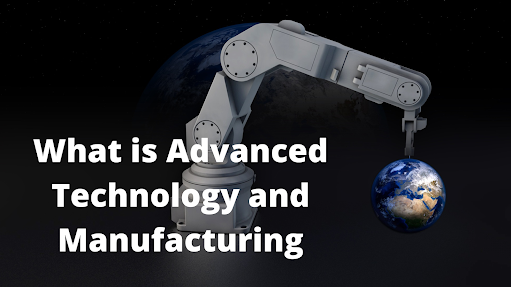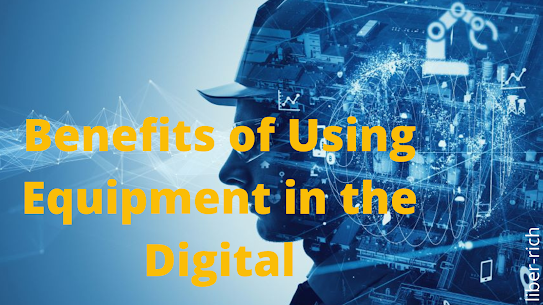All methods and applications involving the use of living beings, whether for academic studies aimed at improving human understanding or for commercial needs aimed at offering an article or a service, fall under biotechnology.
- information and communication technologies
Information and Communications Technology (ICT) combines computer, telecommunication, and governance principles to define how information should be accessible, protected, processed, sent, and stored.
- nanotechnologies

The term "nanotechnologies" refers to any methods and apparatuses that enable the investigation of, or interaction with, specific phenomena existing at the nanometric or nano scopic scale.

Robotics is the synthesis of science, engineering, and technology that results in devices, referred to as robots, that mimic or replace human behaviors. Robots have long been a subject of fascination in popular culture; anthropomorphic, exaggerated representations of them frequently seem to be parodies of the actual thing. But do they have greater foresight than we think? The development of a machine similar to a robot is still a possibility due to the intellectual and mechanical advancements being made by robots.
-How to be at the cutting edge of technology
The best way to stay on top of business technology is to talk to the people you work with. We are all different and our perception of the world varies to a large extent. And you can learn a lot of interesting things about your team's technology.
-What is a high-tech product
The term High-Tech is an Anglicism grouping together everything that revolves around new technologies: computers, the Internet, digital photography, High Definition, mobile telephony...
-What are the new technologies
NTIC bring together the innovations made in terms of storage volume and speed of information processing as well as its transport thanks to digital technology and new means of telecommunication (fiber optics, cable, satellites, wireless techniques).
- 5 Modern Technologies Impacting Manufacturers
1. The Industrial Internet of Things
The expansion and use of the internet of things (IoT) in industrial applications and sectors is referred to as the industrial internet of things (IIoT). The IIoT allows for greater operational efficiency and dependability for businesses and industries by placing a significant emphasis on machine-to-machine (M2M) connectivity, big data, and machine learning. Robotics, medical technology, and software-defined manufacturing processes are all included in the industrial applications of the Internet of Things (IIoT).
2. Big Data Analytics
Big data is a term used to describe massive quantities of digital information that have been obtained from several sources. It is big, raw, unstructured, and rich in business intelligence. The complexity, privacy hazards, and need for both technological and human knowledge are just a few of the difficulties it faces.
3. Artificial Intelligence and Machine Learning
The area of computer science that is connected with machine learning and artificial intelligence is. These two technologies are the most in-demand ones for developing intelligent systems. Despite the fact that these two technologies are linked and that they are occasionally used interchangeably, both words are nevertheless used in separate contexts. Broadly speaking, both AI and ML may be distinguished
4. 3-D Printing
Using a computer-generated design, 3D printing, sometimes referred to as additive manufacturing, is a technique for building three dimensional objects layer by layer. An additive method called 3D printing involves building up layers of material to produce a 3D item. This is in contrast to subtractive manufacturing techniques, in which a finished design is carved from a bigger block of material. As a consequence, less material is wasted while using 3D printing.
5. Virtual Reality
Many of us associate virtual reality (VR) with science fiction movies like "Minority Report" when we talk about it. The reality is that this technology now seamlessly integrates into every aspect of our everyday life. Virtual reality will continue to be used in video games, healthcare, and education. But just what is it? With images and things that seem genuine, a virtual reality (VR) environment gives the user the impression that they are completely engrossed in their surroundings. A virtual reality headset, helmet, or other equipment is used to see this world. VR enables us to learn how to conduct heart surgery, better our sports training to increase performance, and immerse ourselves in video games as if we were one of the characters.
Benefits of Using Equipment in the Digital
The incorporation of digital technologies across the board in a firm is known as digital transformation. It has a profound impact on how a company conducts business. Businesses from many sectors benefit from digital transformation: It helps companies to update antiquated procedures, quicken effective operations, bolster security, and boost revenue.
-Make Smarter Decisions
It is simpler to evaluate and identify trends when data is easily accessible and presented clearly and succinctly, which helps people make decisions more quickly. Personnel working at the facility may now better comprehend and research their aged machinery thanks to this.
-Drive Value
Opportunities for asset enhancements can be found by having the capacity to monitor, control, and present data. In addition to saving time and money, having remote access to real-time data can lessen the danger of exposure to arc flash accidents by eliminating the need to walk to the front of the equipment.
-Customize Alarm Notifications
IoT solutions integrated into outdated equipment allow for the delivery of tailored alert messages that target the particular and locations of alarms and allow for the sending of email alerts of alarms to persons within the company.
-Maximize Operational Efficiency
It is simple to connect to a computer or supervisory control and data acquisition (SCADA) system to be able to access data and analyze the operation of outdated equipment by modernizing it with contemporary technology. Additionally, using the most recent technology, plant managers may gather data and examine it from a mobile device.
The digitization of outdated machinery has a number of additional advantages that can help with maintenance schedule development, equipment planning, and minimizing staff time spent in front of the machines. By combining predictive maintenance with preventive maintenance over time, these smart technologies can have an impact on costs and safety.

















